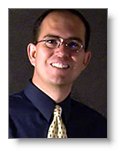
He’s coming up because my old picture (to the right, on the bottom) just doesn’t work, and the new one (to the right, on the top, and on the US News article, here), isn’t the right one for the magazine (how freaking cool is that? The article is apparently going to print!)… and I’m pretty excited. Although I admit I’ve thought a lot about Penelope Trunk’s posts about looking/feeling inadequate, and glad that the photographer can use Photoshop to whiten my teeth instead of me having to get them bleached :p Ah, the silly things we think about when the opportunity arises.

What for? I don’t know – your blog. Or your website. Or a newspaper article, or …. who knows?? I scrambled to get my first professional headshot when Peter Clayton did a podcast interview with me almost two years ago (!!) and he required a headshot.
So let me point you to the best advice I’ve seen on your headshot: Sue Brettell’s article titled Online Identity: Headshots That Make A Compelling First Impression.
Sue Brettell’s article is a soup-to-nuts resource for ensuring you do it right. What to wear, how to find a professional who fits your budget, why to avoid alcohol and smoking before your photo shoot, stuff to take with you to the studio, and more, this is an excellent read to help you prepare and get what you need!
Go check out Sue Brettell’s Online Identity: Headshots That Make A Compelling First Impression, and then shoot me an e-mail (or put a link in the comments) with your headshot!

Re: your article, “Where is Your Headshot?” Years ago, I was living in Kansas and applied for a job in Kentucky. My resume and cover letter were impeccable, professional, and targeted for the job. They called me and asked for a picture. I understand the value of putting your best foot (face) forward and how far a good first impression goes, but I can’t help thinking that requiring a headshot when applying for a job is discriminatory – or at least can open the door for erroneous judgment based on the interviewers’/employers’ preferences. Physical appearance is so superficial. I’m sure we would all like to think that interviewers and employers are “bigger” than that and that their only interest in seeing your picture is to save time – weed out the obvious drug users who are always unkempt and blatantly unprofessional – but I don’t buy that for a minute. Employers want to work with people who are like themselves and the only way to quickly judge before an interview is to require a picture. That’s too bad. I know a lot of terrific, professional, smart people who think as I do. We prefer employers who are willing and anxious to meet candidates based on their achievements and goals – not how white their teeth are in a headshot.
This message is very important. I think the headshot communicates so so much. It’s our first and best opportunity to add credibility to our message. So a poor choice can easily kill whatever credibility you’ve built, and I’ve seen many, many poor choices out there 🙂
I’ve experienced the same scenario, Jason. However, it’s funny, because for all that magazines say the photo you provide “isn’t right,” the ones they take usually turn out much worse! Hope you’re having fun at SNCR maybe running into some Edelman folks!
Alexandra Levit
Author, How’d You Score That Gig?
Blogger, Water Cooler Wisdom
https://alexandralevit.typepad.com (note new blog address)
This comment is a bit late in the day, but I had to respond to Allie’s valid point.
I absolutely agree that we should not be judged by how we look, and when it comes to seeking a job, we should be considered first and foremost by our credentials ….in an ideal world.
However, like it or not, we all make subconscious decisions about people based on how they look – their body language, choice of clothes, grooming, facial expressions etc.
Thirza Dixon of https://www.93percent.co.uk explains:
“There are many statistics about communication, the majority record pretty much the same results. The most famous compiled on effective communication was by a psychologist called Mehrabian. He found that in terms of impact during face to face meetings; the percentage is broken down as:
55% Appearance
How you look, your body language, the way you take up space.
38% The Message
How you deliver the message. The tone, volume, pitch and pace speech.
7% Content
What is actually being said.”
For some jobs, appearance is a factor – consider actors for whom the headshot is the most important part of their resume, and any job which requires interaction with clients or customers. A photograph also helps interviewers to put faces to names.
I don’t believe this is about physical attributes. It’s about making the best of ourselves and having appropriate presentation for the job. Peter Jones, of UK’s Dragon’s Den and American Inventors, is famous for his dismissal of UK entrepreneurs who pitch their businesses dressed in casual clothes. In America he has had to accept a much more relaxed attitude to dress, but I suspect he will have found it difficult.
A poor headshot sells you short. It establishes in the mind of the viewer that you don’t care about how you look. A good headshot will present you in the best possible light and enhance your job application.
It’s also true of your online presence. Your headshot personalises your blog, website and networking activities. It gives people a sense of you beyond your written communication. If you get it right, your headshot will attract your target audience and give them a sense of connection to you.
Going back to Peter Jones, he would say that presentation really matters because it shows that you’re taking a professional attitude. Attention to your hair, choice of clothes and general demeanor pays dividends. Preparation is everything – rehearse your look before your session with a photographer and before your interview. Check in a mirror what your body language is saying about you. Rehearse your interview answers or presentation speech with attention to the tone and pitch of your voice.
In terms of who we are, yes, physical appearance is superficial. However in today’s visually-led society, it’s not something we can choose to ignore.